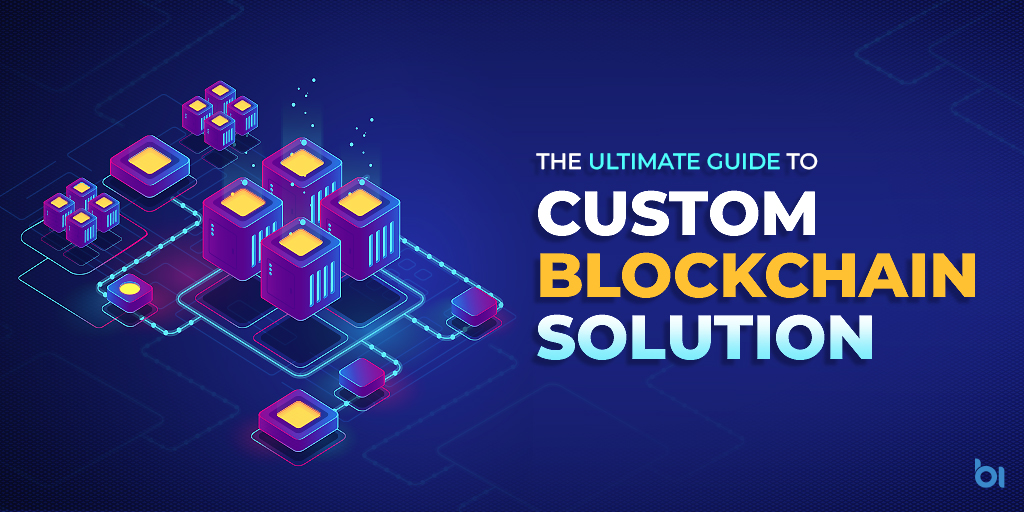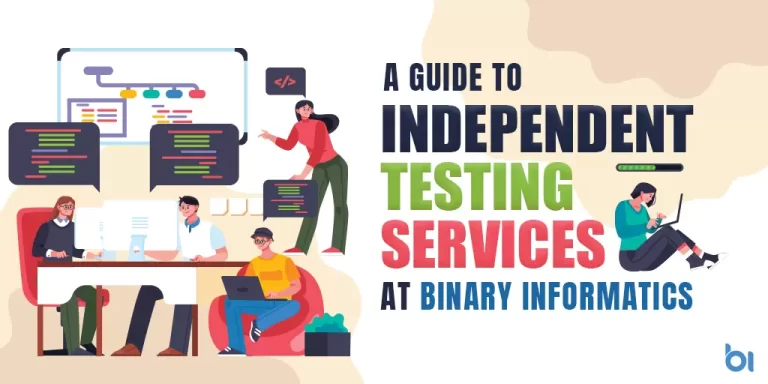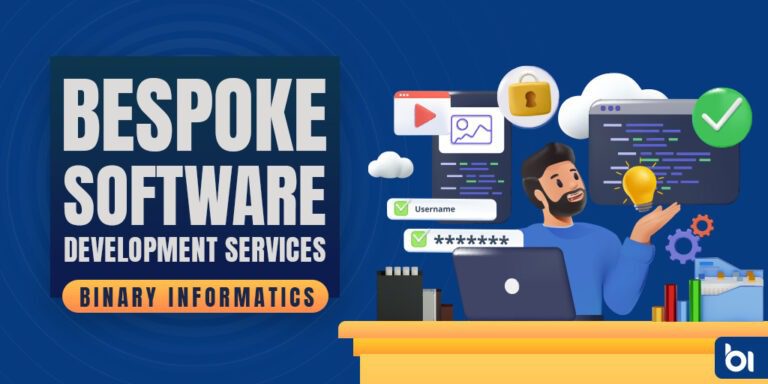However, blockchain technology, and blockchain itself, are not the same as a blockchain network. A blockchain network is an underlying infrastructure for the cryptocurrency to operate. Blockchain network also needs support systems, processes, and processes to help it run. A blockchain network needs a custom blockchain solution.
A custom blockchain solution can be used to enhance blockchain networks. It can be used to enable, facilitate, support, or secure blockchain networks. But before any blockchain solution is implemented, there needs to be a thorough process of research and planning.
This article will provide a high-level overview of custom blockchain solutions. We will briefly talk about the technologies that are commonly used in custom blockchain solutions. We will provide an in-depth review of custom blockchain solutions. It is a must-read for anyone who is interested in blockchain technologies.
Here is the list of topics we will be covering. You can jump to a specific section of the article below-
1. Blockchain Technology Basics
2. Advantages of the Blockchain Technology
3. How the Blockchain Technology Works
4. Types of Custom Blockchain Solutions
-
- Type 1: The Custom Blockchain Solution that is Using a Public Blockchain
- Type 2: The Custom Blockchain Solution that is Using a Private Blockchain
- Type 3: The Custom Blockchain Solution that is Using a Hybrid Blockchain
5. The Types of Transaction in the Blockchain
1. Blockchain Technology Basics
Technology is a constant source of information. It influences how people live, work and interact. However, the speed of change in technology is very fast. The blockchain technology is still in its infancy. Most people haven’t even heard of the technology.
The blockchain technology can be described as a public, distributed, and decentralized ledger, that is continuously recorded without the need for a trusted third party. While the technology is young, we still have a lot to learn from it.
The blockchain technology is the world’s first shared, secure, and distributed ledger. It is the technology that is behind Bitcoin, and other cryptocurrencies.
The blockchain technology can be described as a distributed ledger, where each member of the network can see the history of all transactions, which occurs in the network.
What this means is that each member of the blockchain network has access to the ledger, or the record, of every transaction that takes place in the network. This means that each member of the network is updated with the latest transaction details.
The blockchain is a public, decentralized, distributed database. These three characteristics are what makes the technology behind the blockchain unique. A distributed database is one that has multiple copies stored across multiple computers. Every member of the network has the right to edit the data in the blockchain, and every member has the right to see the ledger.
While the technology is still evolving, the benefits that the blockchain technology can provide are limitless. Below are just a few of the benefits of blockchain technology.
Read Also: Blockchain Technology Solution: Innovation for Business Needs
2. Advantages of the Blockchain Technology
A) Eliminate single points of failure
With the blockchain technology, there is no need for a trusted third party. This means that the blockchain technology can eliminate a single point of failure.
With the blockchain technology, there is no need for a trusted third party. This means that the blockchain technology can eliminate a single point of failure.
B) Reduce risk of fraud
Fraud is something that always exists. Fraud may take the form of fraudulent financial institutions, fraudulent social media sites or a fraudulent exchange site. Regardless of the form of fraud, it always leads to losses.
If there is no trusted third party, there is no single point of failure that can be exploited by fraudsters. There is no need for a trusted third party to validate transactions.
3. How the Blockchain Technology Works
Each node on the blockchain network is connected to a distributed database. If all nodes in the network are connected to a database, and the database has a history of transactions, the blockchain network will create a distributed ledger that is shared across every node in the network.
The transaction in the blockchain can be described as a transaction that connects two addresses. This means that in a blockchain network, there will be two addresses that are connected.
A transaction, or a transaction record, can be any type of operation that makes a change in the blockchain. It can be, for example, transferring cryptocurrency from one address to another, or any transaction that can be described as a change in the ledger.
When a transaction is created, it needs to be signed. When signing a transaction, the creator needs to encrypt it. An encrypted transaction is a transaction that is locked down so that only those that have access to the keys can make transactions.
The transaction needs to be added to a block. A block is a group of transactions that are connected to each other. Every block is considered as a block in the ledger. The ledger can be thought of as a linear database. Each block is added to the end of the database.
Transactions are grouped into blocks. Each block needs to have a timestamp. When the transaction is added to a block, the block is stamped with the date and time that the block was created. This means that if a block is found in the blockchain, the timestamp can be read.
This is the process of how the blockchain works. Understanding the process will help in understanding what blockchain technology is, and how it works.
Read Also: Top 10 Blockchain Technology Applications for Industry 4.0
4. Types of Custom Blockchain Solution
Every application has its own unique needs. There are different types of custom blockchain solutions that a blockchain network can implement. Below is a list of types of custom blockchain solutions.
Type 1: The Custom Blockchain Solution that is Using a Public Blockchain
A public blockchain is a blockchain that is shared publicly. A public blockchain is an example of an open network. An open network is where the members of the network do not have to submit their transactions to a particular trusted party.
A public blockchain is the best type of blockchain network to use. They are well suited to the needs of a blockchain network. It is important to understand the pros and cons of using a public blockchain, and the features that are provided by a public blockchain.
Pros
- A public blockchain network can be highly secure
- A public blockchain network provides a shared, synchronized ledger
Cons
- A public blockchain network is not private
- A public blockchain network cannot be used to store sensitive information
Type 2: The Custom Blockchain Solution that is Using a Private Blockchain
A private blockchain is a blockchain that is owned by an individual or a company. They may be owned by a company, a particular group of people or a specific individual.
Private blockchain networks are the best type of blockchain network to use if the owner of the network wants to retain the information of the network. A private blockchain network is a blockchain network where the members of the network cannot view the blockchain.
Pros
- A private blockchain network can be highly secure
- A private blockchain network can be used to store sensitive information
Cons
- A private blockchain network is not synchronized
- A private blockchain network is not public
Type 3: The Custom Blockchain Solution that is Using a Hybrid Blockchain
A hybrid blockchain is a combination of a private blockchain network and a public blockchain network. The public and private characteristics of the network are not mutually exclusive.
A hybrid blockchain network is the best type of custom blockchain solution to use when the blockchain network needs a fast transaction processing speed, but needs access to the shared, synchronized ledger.
Pros
- A hybrid blockchain network can be highly secure
- A hybrid blockchain network can be used to store sensitive information
Cons
- A hybrid blockchain network is not public
- A hybrid blockchain network is not synchronized
Read Also: How To Pick The Right Blockchain Platform For Your Business Use Case
5. The Types of Transaction in the Blockchain
A transaction is anything that is recorded on the blockchain. The types of transactions that can be recorded on a blockchain are as follows.
- Payment Transaction
- Smart Contracts
- Fiat Transaction
- Asset Transfer
Payment Transaction
Payment transactions take place between two addresses. These addresses are known as the payer and the payee. In a transaction, the transaction between two addresses can be described as a payment transaction. A payment transaction can be a transaction that moves cryptocurrency from one address to another.
Smart Contracts
Smart contracts are a mechanism for interacting with the blockchain. It automate the execution of an action when a condition is met. A smart contract on the blockchain can be described as a transaction that moves cryptocurrency from one address to another.
Smart contracts can be programmed to automatically execute a transaction.
Fiat Transaction
In a fiat transaction, a cryptocurrency is used to move value from one address to another.
Asset Transfer
An asset transfer transaction moves cryptocurrency from one address to another. An asset transfer transaction can be described as a transaction that moves cryptocurrency from one address to another.
Conclusion
In this guide, we introduced you to the concept of blockchain & Guide to custom blockchain solution. We also described how a blockchain works and the various types of custom blockchain solutions that can be used to fit the specific needs of a blockchain network. You should now be able to use blockchain in the application that you are developing.
Blockchain is an emerging technology. In this guide, we have tried to outline the basic understanding of blockchain and custom blockchain solutions. We hope that you are able to get some insights into the technology.
Binary Informatics is a leading Blockchain Development Solution Company, help startups and enterprises integrate reliable and secure decentralized blockchain solutions for their business automation. Our blockchain solutions are tailored to specific business use cases via feature integration, system modifications, and implementations.




